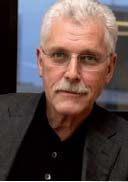ESR president unveils his vision of radiology's future
Since he was elected president of the European Society of Radiology in March, Prof. Maximilian F. Reiser has worked hard on expanding ESR's global reach and implementing new training and accreditation initiatives.
Since he was elected president of the European Society of Radiology in March, Prof. Maximilian F. Reiser has worked hard on expanding ESR's global reach and implementing new training and accreditation initiatives. In this question-and-answer article, he reflects on his first six months in office, as well as his future challenges.
Diagnostic Imaging Europe: What do you consider to be your main achievements so far?

Prof. Reiser: I have continued the work of previous presidents in expanding the membership base of the ESR. As of Sept. 28, 2010, we have 50,635 members, and the ESR has developed into an international society. Over the past year or two, particularly rapid growth has come from Central and Eastern Europe, South America, and China, Korea, and Japan.
The European Diploma in Radiology will swing into action by ECR 2011. It has not been a straightforward process because so many different aspects are involved, and we have had to take account of various national sensitivities. But we have had the full support and endorsement of subspecialty societies, which has been valuable. The European Diploma will run alongside national diploma schemes. Mutual recognition may be possible, but will not happen for a while yet. This would help the migration of radiologists between countries.
Strengthening oncologic imaging has been another top priority. We are collaborating with the RSNA for the development of oncologic imaging as a subspecialty, and the plan is to run the same course at both ECR and the RSNA meeting. We are also participating in the EU Action Against Cancer.
DIE: What work still needs to be done?
Reiser: In terms of ESR membership, we are still underrepresented in North America and Mexico. We are trying to reach out to these areas by making new contacts with radiological leaders and have a presence at the 25th Interamerican Congress of Radiology, to be held in Santiago de Chile at the end of October. We'd also like to have closer connections with other societies such as the European Society of MR in Medicine and Biology. We have not had official contact with the ESMRMB in the past, but that is now happening. We also want to make more progress in resource-scarce countries, including those in central Africa.
DIE: What actions are you taking to ensure that radiology continues to prosper in the future?
Reiser: We are trying to change how radiology is perceived by the public and by policy decision makers. The public needs to recognize that radiology is a separate clinical discipline in its own right. In addition, we must ensure patients gain a better understanding of radiation risks. To do this, we are running public campaigns on radiation exposure and training schemes for radiologists so they are fully aware of radiation protection and can explain the issue. We also want to show medical students that radiology is a fascinating discipline with a bright future.
At the EU level, the ESR's lobbying efforts are becoming increasingly effective, and they are bringing results. This is shown by the European Parliament's decision first to postpone and now amend the directive on electromagnetic fields, which, in its original form, posed a potential threat to clinical MRI. We have also been involved in European e-health and telecommunications initiatives, including the Cross-Border Healthcare Directive. All legislation should be workable for radiologists, and maintaining the quality of examinations is our main concern.
Lobbying takes a lot of time and resources, but to develop a strategy and monitor the situation closely, we have formed a task force group headed by Prof. Christian J. Herold, ESR's immediate past president. We want to make sure that radiology's voice is heard and we are getting accurate information right out of the horse's mouth!
DIE: What do you regard as the three most important emerging, long-term trends?
Reiser: First, I think molecular and functional imaging will become more important-and not just for making a diagnosis. However, we need to express results better and in a more quantitative manner. For instance, it is essential to show not only a stenosis, but also other findings. The liver has specific quantitative characteristics, and they must be displayed. New imaging biomarkers will play a role in this area.
Second, there will be less emphasis on specific organ systems and more stress on diseases like diabetes, atherosclerosis, and rheumatic disorders. This will require a different approach, but we must still have a high level of expertise in specific organs. I think we will need a multidimensional matrix that includes specialization in different organ systems and cross-sectional organ systems according to diseases.
Third, training, integration, and collaboration will be even more significant. For example, we are aware of imaging being used more often in the operating room, and we must be involved in that process. We must do everything we can to preserve the identity and value of radiology.
GE HealthCare Debuts AI-Powered Cardiac CT Device at ACC Conference
April 1st 2025Featuring enhanced low-dose image quality with motion-free images, the Revolution Vibe CT system reportedly facilitates improved diagnostic clarity for patients with conditions ranging from in-stent restenosis to atrial fibrillation.
The Reading Room Podcast: Current Perspectives on the Updated Appropriate Use Criteria for Brain PET
March 18th 2025In a new podcast, Satoshi Minoshima, M.D., Ph.D., and James Williams, Ph.D., share their insights on the recently updated appropriate use criteria for amyloid PET and tau PET in patients with mild cognitive impairment.